IAQ IQ Fall, 2019
©2019 Jeffrey C. May
Fungi require moisture. I want to start with a brief review of two types of fungi, because it’s important for building professionals to know the difference.
Macrofungi produce fruiting bodies that we call mushrooms or toadstools. These organisms have hyphae that can fan out a few feet to many yards (or in some cases buried across acres of soil) from the location of the mushroom. The hyphae can be visible or more often, can be present within the substrate or soil. Macrofungi are wood-decaying organisms, and most do not grow in temperatures below 55oF.
Microfungi, commonly called “mold,” grow in colonies and fan out along a surface. Indoors, these organisms subsist on biodegradable surface materials that include dust, oils, fats, starches, wood sugars, pet-dander particles, and skin scales. While few microfungi degrade wood, they produce large numbers of spores that can impact human health.
Both kinds of fungi require moisture, but macrofungi need more moisture than most species of microfungi need. Some molds (microfungi) such as Aspergillus and Penicillium can flourish in conditions of elevated relative humidity (RH) without the presence of liquid water.
Exceptions would be Stachybotrys mold (commonly known as “toxic black mold”) and Chaetomium mold; both need chronically damp conditions. Stachybotrys and Chaetomium molds commonly grow on the paper of wet drywall (and not the gypsum). Both of these fungi are black, so some people mistake one for the other. Cladosporium mold is also black but can grow under drier conditions. This type of mold is commonly found on attic sheathing and on basement foundations.
I am more concerned about the presence of Aspergillus and Penicillium molds than I am about the presence of Stachybotrys mold, because Aspergillus and Penicillium spores are more readily aerosolized than Stachybotrys spores are. Thus exposures by inhalation are more likely; in addition, some species of Aspergillus and Penicillium molds can produce mycotoxins. Some species Aspergillus can even grow inside the lungs of immune-compromised individuals, resulting in an illness called aspergillosis.
Water intrusion: We all know that roof water should not flow down the outside of a building; and chimney flashings are an important deterrent to water intrusion in attics.
There are two other conditions that a building inspector should mention to a client: window-cap and door-cap flashings bent toward rather than away from cladding, and exterior wires and cables leading with a downward slope into a house.
Certain conditions that can lead to water-intrusion below grade include: a building without a gutter system and with inadequate overhang; reverse grading (even from an adjacent property); and a “garage under” with a driveway that slopes toward the house.
I’d like to point out three other conditions that concern me: a deck on a house without a gutter overhead; downspouts that empty into drywells; and concrete patios or walkways next to foundation walls.
I’ve inspected many decks that suffered structural decay due to roof water. And a deck doesn’t prevent roof water from ponding next to a foundation wall. Drywells can silt up over time. I recommend that clients stand outside during a heavy rain to see if a drywell is taking downspout water. A great deal of rainwater can flow through cracks in concrete; this water may end up in a basement or crawl space.
Internal sources of moisture: Dryers should not vent into crawl spaces. Bathroom exhaust fans should vent to the exterior and not into an attic or soffit. Pull-down stairs or a hatch leading to an attic should be airtight to prevent the upward flow of moist house air; otherwise the moisture can condense on cool sheathing in the fall, winter or spring, leading to mold growth.
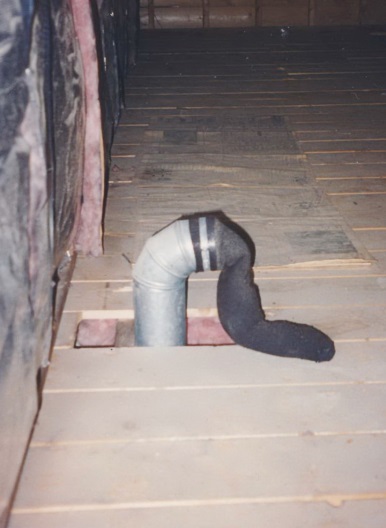
Some older houses in New England have hot-water or steam heat with a separate, ducted air-conditioning system. Returns (especially those located in hallway ceilings near bathrooms) as well as ceiling supplies in such houses should be closed during the winter to prevent the flow of moisture into the ducts, where mold could then flourish.
Relative humidity (RH) below-grade: As air cools, its RH rises, so below-grade spaces are prone to developing high RH conditions. It’s not therefore surprising that some molds commonly grow below-grade when the RH is not or has not been adequately controlled.
Mold spores die after months to years; unfortunately, mold spores remain potentially allergenic even when dead.
The RH in unfinished basements should be at or below 50% and in finished basement spaces, 60%. During the humid season (in New England, generally between mid-April and mid-October), unfinished basements must be dehumidified. Finished basement must either be air conditioned or dehumidified (or both, if necessary). During the heating season, unfinished basements do not need to be dehumidified, but finished basements must be consistently heated, whether in use or not, with the thermostat set at a minimum of 60oF.
Mold growth above grade: Mold growth can also be found above-grade in properties located near water, properties with intermittent occupancy, and properties that have gone through foreclosure and have been empty for a while.
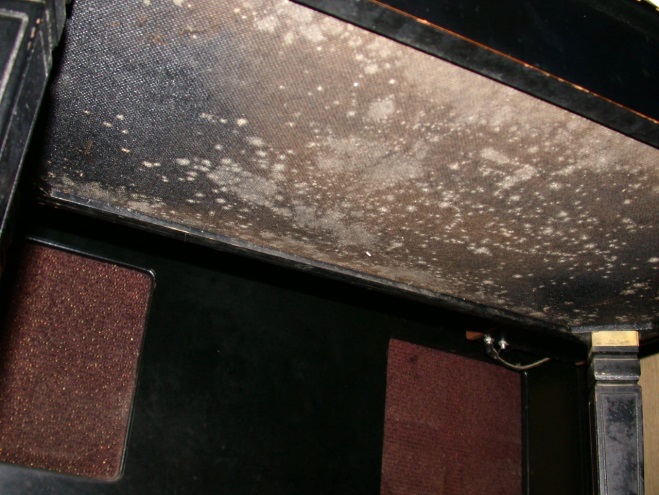
Members of my own family own a vacation home in northern New England. They used to go to the house during winter vacations, when they operated the wood stove and cooked lots of food for their children and their friends, filling the house with warmth and moisture. They also put a pot of water on the wood stove to humidify the indoor air. When they left the house, they turned the heat down below 50oF.
Conditions of elevated RH developed. I found mold growth on the bottoms, sides and backs of many pieces of furniture, as well as on the bottom foot or so of exterior walls and curtains covering sliding glass doors.
Some Tips: Here are some tips to help you with your inspections as well as to pass along to your clients:
- A raised floor in a finished basement can hide all sorts of ills, including moisture intrusion, mold growth and wood rot.
- Window-cap and door-cap flashing should be sloped away from rather than toward the cladding. People can add a bead of caulk at the inner edge of such a flashing to redirect the slope. They can also create “caulk dams” at the ends of the flashing to prevent water from entering the trim/siding interface.
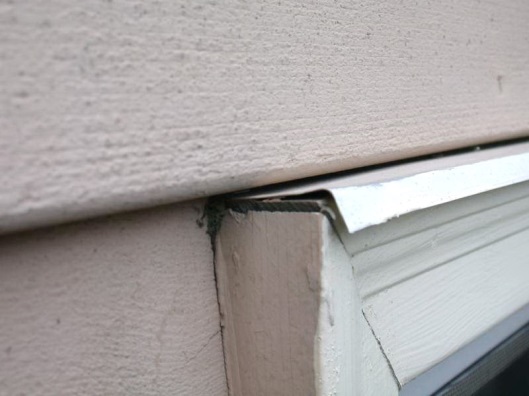
- An alternative to a drywell would be installation of solid, 4” PVC piping a few inches below the soil. The piping can extend to daylight downhill from a building or at the edge of a deep landscape furrow, and a downspout can be inserted into such piping.
- Be wary about cracks in concrete that are near a foundation wall and subject to water flow from a downspout.
- A mushroom growing out of siding may be an indication of extensive fungal growth and rot beneath the surface.
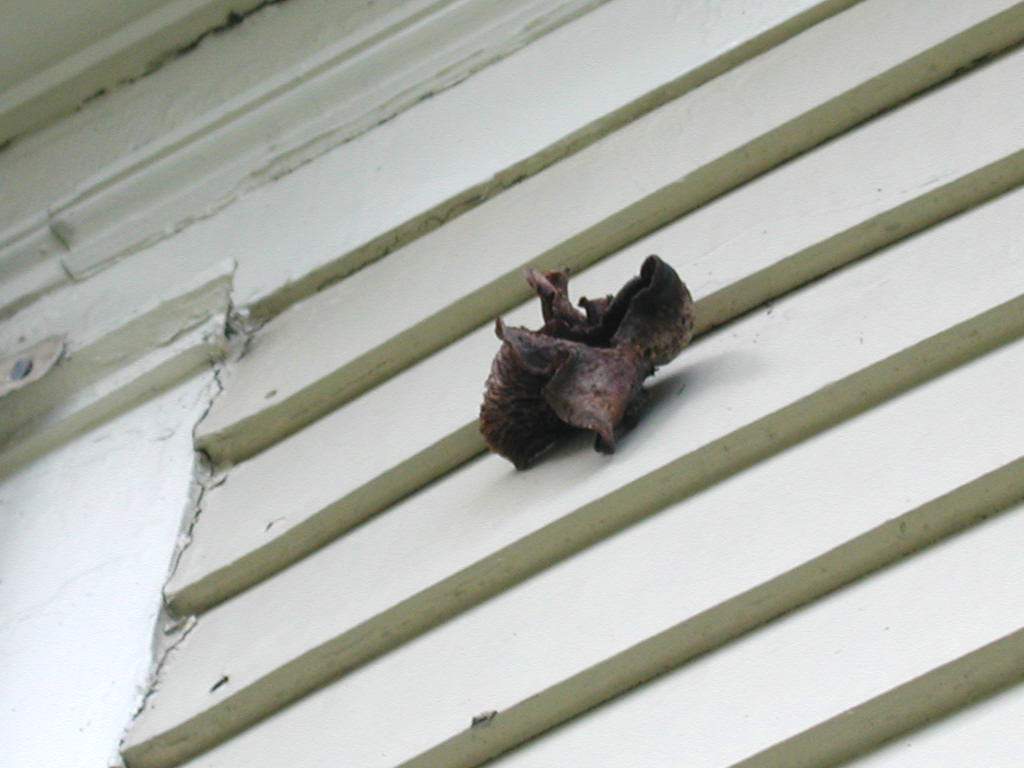
- A thermo-hygrometer should be used to measure the relative humidity apart from the set point on a dehumidifier. The thermo-hygrometer should be placed near the floor in an exterior corner where the RH is the highest.
- A cable or wire leading from the exterior into the siding or trim of a house should have a “drip loop” to prevent rainwater from entering the building.
- Access to an attic should be covered with an airtight, insulated box to prevent the upward migration of moist house air.
I’m a presenter at this year’s Maine Indoor Air Quality Council’s annual conference, “IAQ & Energy,” in Portland, Maine. Go to https://maineindoorair.org/ for more information.
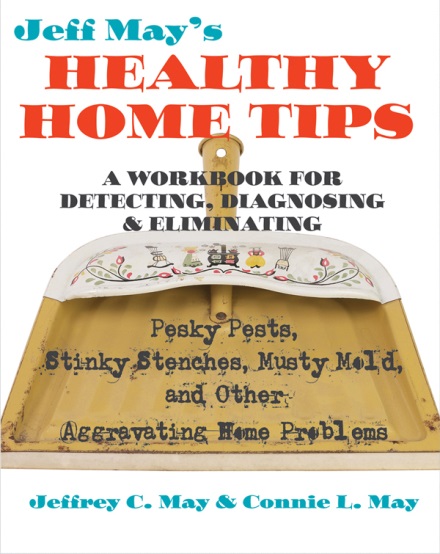
Look for the second edition of our book My House is Killing Me in 2020, published by The Johns Hopkins University Press. Jeff May’s Healthy Home Tips is also a good resource for your clients. The book lists tips to help people improve the quality of their indoor air, as well as includes spaces where they can keep a written record of the progress they’ve made in cleaning up their indoor environments (also published by The Johns Hopkins University Press, available on amazon.com).
Have a pleasant Thanksgiving.
Jeff
